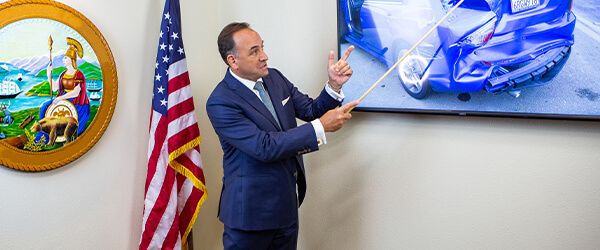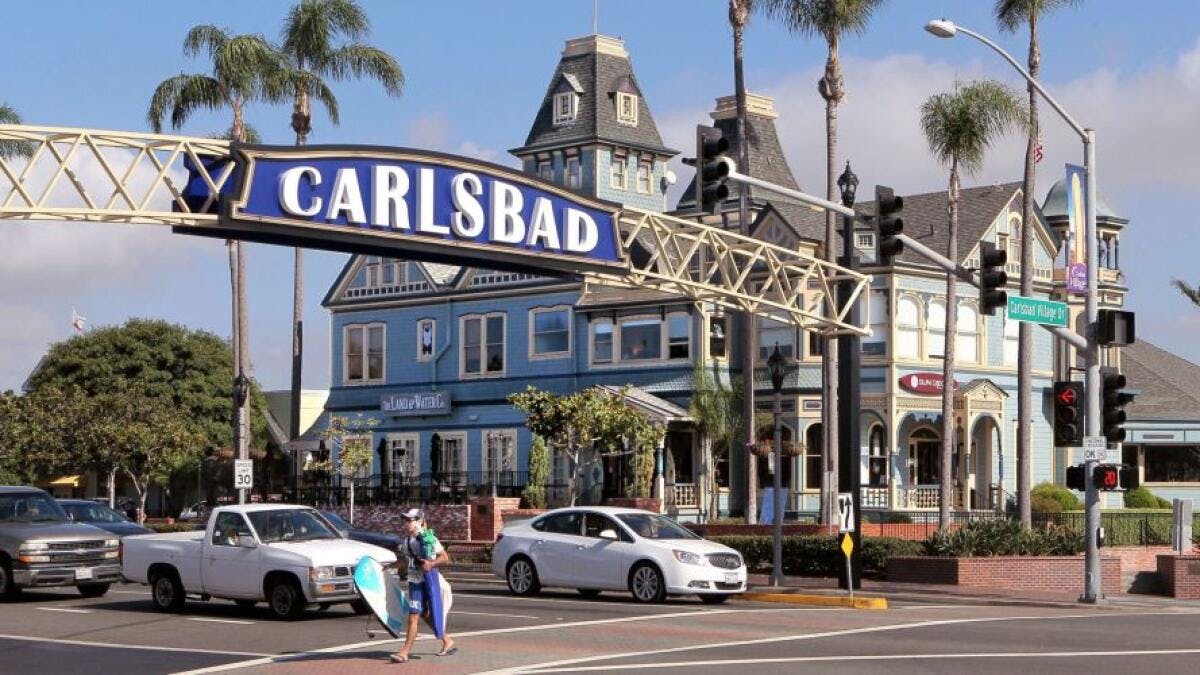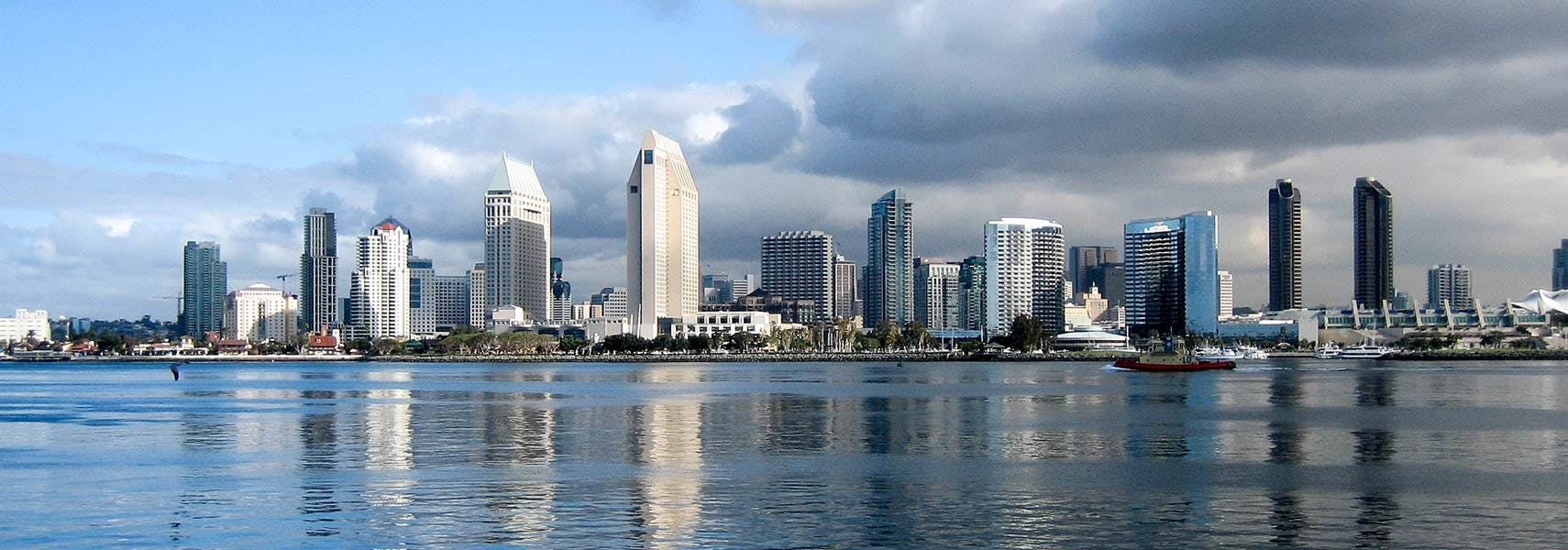Get A Nationally Ranked Top 100 Lawyer. Nearly $100 Million Recovered For Our Clients in San Diego, California
San Diego Fatal Bike Accident Lawyers
Bicycle riding is a popular mode of transportation used for sport, exercise, recreation and commuting. Children, adolescents, adults and the elderly ride bikes on the sidewalks, trails, roadways, and highways. From 2010 to 2019, more than 40 million people in the United States rode bicycles annually. When people are cycling, they are vulnerable to the environment and vehicles around them. Unlike automobiles, bikes do not have a hard covering or frame that surrounds the riders’ bodies. Motor vehicles also can reach high speeds with the ability to make quick changes and maneuvers using the steering wheels. Bicyclists control the speed and direction of the bikes with their pedals and handlebars. However, when riding alongside cars, speed and maneuverability are not equal. If an automobile collides with a bicycle, the impact may result in the death of the bicyclist. The surviving family members may seek compensation from the at-fault motorist for the injuries, death, and damage arising from the accident.
If your loved one died in a bicycle accident, call 760-512-8088 for a free consultation with a knowledgeable San Diego fatal bike accident lawyer at the Levinson Law Group.
California bicycle equipment laws
California law sets forth the rights, responsibilities, and protections for the operation of bicycles. State law defines bicycles as devices people ride by human power with belts, chains, or gears and having one or more wheels. It governs the function of the equipment on and accompanying bicycles. For example, people must ride bikes appropriate for their height with brakes that allow riders to stop quickly and safely. It is more difficult for cyclists and motorists to see when it is dark outside; therefore, the law requires lights and reflectors on bicycles for better visibility at night. The cyclist must attach a white headlight to the front of the bike with light visible from a distance of 300 feet. Under California law, the bike operator must have reflectors in specific places on the bicycle. The requirements are:
- Red reflector visible from the back of the bicycle
- White or yellow reflector visible placed on each pedal or attached to the bicyclist’s shoes or ankles that is visible from the front and back of the bicycle
- The bike must have a white or yellow reflector on the front half and a red or white reflector on the back half of the bicycle for side visibility. However, bicycles with front and back tires that reflect do require side reflectors.

California bicycle operation laws
California law does not include bicycles as vehicles in California, but they share many of the same rights on the highways. They are also subject to the same rules, including prohibited uses. Under state law, bicyclists also have the right to travel on the roadway with motor vehicles. Some riders can pedal at the same speed as automobiles. The average bike speed may reach up to 30 miles per hour. When a bike travels below the posted speed, it must ride in the bike lane or on the right side of the road as close as possible to the curb or edge.
Automobiles have metal bodies, typically made of steel, that give motorists a protecting cover while they drive. As strong as steel, motor vehicles are not indestructible. Cars can get scratches and dents. In accidents, parts of the car’s body may fall off or get crushed. The driver of the automobile can also sustain injuries in a car accident. However, bicycles do not provide a hard covering around the riders. Their bodies are vulnerable to the environment. If they have a collision or otherwise fall off the bike while riding, their bodies are more likely to get the direct impact.
Thousands of people go to the emergency room each year for traumatic brain injuries resulting from bicycle accidents. Although bicycles do not provide a protective shield for the body, California law requires bike operators and passengers to wear helmets to protect their heads. The helmet must fit properly and meet the legal requirements and safety standards.
Distracted driving also makes bicyclists vulnerable to accidents and injuries. Like motorists, bike riders must pay attention and remain alert. State law prohibits cyclists from have both ears covered or plugged by headphones or earplugs while riding a bicycle. Bicyclists also cannot operate a bicycle while under the influence of alcohol or drugs.
Bicycle accident fatalities
Bicycle accidents occur every year. Some of the accidents resulted in fatalities. Fatal bike accidents occur throughout the year; however, warmer months see a higher number of bicycle crashes than the colder months. Nationwide, more than 1000 deaths occurred in bicycle-related crashes in 2019. In California, nearly 4,000 traffic fatalities occurred in 2019, with 133 deaths due to fatal bike accidents.
Compared to cars, trucks, other automobiles, bicycles are smaller-sized and unable to reach very high speeds. Sometimes motor vehicles and bikes travel on the roads, streets, and highways at the same time. Pedestrians may also encounter bikes and motor vehicles while walking on the side of the roads, crossing the street or sidewalks, and in parking lots. Several types of bike fatalities may occur in collisions with:
- Automobiles
- Pedestrians
- Other bicycles
- Objects (ex. buildings, railings, trees)
Immediately after a fatal bicycle collision, the surviving parties involved must report the accident to the police. They must remain at that accident scene and provide their information to the officer. The motor vehicle driver in the accident must also report the crash to his automobile insurance provider.
Fatal bicycle accident lawsuits
At-fault parties in a fatal bicycle crash are liable for the damages resulting from the accident., including a victim’s death. The law refers to the deceased person as the decedent. Two legal claims may arise from a fatal bike accident – survival action and wrongful death. The surviving spouse and the decedent’s children may file a lawsuit to seek compensation for the loss of their family member; however, the personal representative of the deceased’s estate may file the case on their behalf.
A survival action claim is for the injuries or damages the decedent sustained or incurred from the accident before dying. The personal representative seeks the compensation entitled to the decedent if he survived and filed the lawsuit himself. The estate may recover economic damages, such as the decedent’s medical bills, property damage, and lost wages. The estate may also receive punitive damages in a survival action claim, but it cannot recover damages for pain, suffering, or disfigurement. If the accident and victim’s death happen simultaneously, the decedent’s estate does not have a survival action claim. Such claims compensate for the survival period between the accident and the victim’s death.
Under California law, a death caused by a wrongful act or neglect or another is a wrongful death. The wrongful death lawsuit seeks compensation for the beneficiaries’ damages due to the victim’s death. The beneficiaries may receive economic and noneconomic damages.
Economic damages are the financial losses that have actual or calculable amounts. In a fatal bike accident, such damages may include funeral expenses, burial costs and the cost of getting a substitute for domestic services. Noneconomic damages are emotional, physical, and mental losses, such as:
- Pain and suffering
- Loss of companionship
- Loss of consortium
- Emotional distress
- Mental suffering
Criminal consequences of fatal bike accidents
Fatal bike accidents may occur because of a negligent, reckless, or intentional act. The at-fault party in a fatal bike accident could face criminal consequences for the victim’s death. Fatal bike accident crimes include vehicular manslaughter, driving under the influence and hit and run,
Misdemeanor vehicular manslaughter occurs when an at-fault driver’s negligence results in the death of another person and is punishable by up to one year in the county jail. Gross vehicular manslaughter happens when the gross negligence of a driver causes the death of another person. Gross negligence is the reckless disregard for human life. A driver found guilty of gross vehicular manslaughter faces imprisonment of up to one year in county jail or a term of two, four, six years in state prison.

California law prohibits motorists from operating a motor vehicle while under the influence of alcohol or drugs, also known as a DUI. Intoxication impairs a driver’s ability to focus, affects his reaction time, and distorts his judgment. Without clarity, a driver may collide with a bicyclist, and the impact leads to the death of the bike rider. The at-fault party could face the criminal charge of a DUI resulting in death. A person found guilty of vehicular manslaughter while intoxicated could serve up to four years in county jail; however, if the driver was grossly negligent, he may face up to ten years in state prison
An at-fault driver of a fatal bike accident can make the situation worse by leaving the accident scene. After an accident, the parties may remain at the accident scene and report the crash to the appropriate law enforcement agency. A hit-and-run is a criminal offense. The penalties range from fines to imprisonment. The punishment for leaving the scene of an accident that involves a death are:
- A $1,000 to $10,000 fine;
- 90 days to one year in county jail; or
- Two to four years in state prison; or
- A fine and imprisonment
- A fine from $1000 to $5000;
- Imprisonment of no more than ten years; or
- Both fine and imprisonment
Hiring an attorney
If your loved one’s death occurred from a fatal bike accident, it is best to let a knowledgeable attorney handle the case. Fatal accidents lawsuits can be complex and time-consuming. Contact Levinson Law Group at 760-512-8088 for a free consultation with an experienced fatal bike accident lawyer to discuss your case.
















